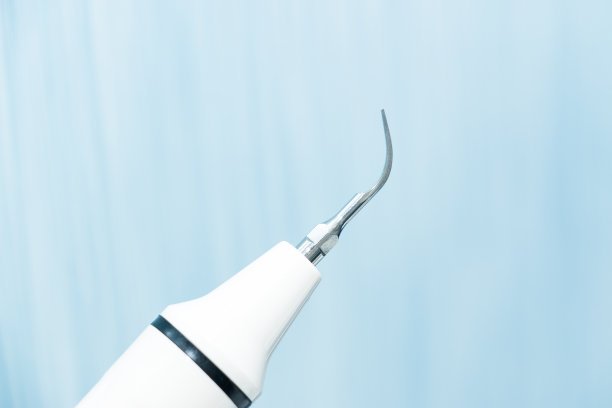When a Tooth Must Go Why Extracting a Tooth Can Be the Best Solution for Your Dental Health
Summary: The decision to extract a tooth can often be a daunting one, yet it is sometimes necessary to preserve overall dental health. This article explores the importance of dental extractions by discussing four main aspects: alleviating pain and discomfort, preventing the spread of infection, making room for alignment, and safeguarding adjacent teeth. We will examine how tooth removal can serve as an advantageous solution in various dental scenarios, ultimately allowing patients to maintain a healthier mouth and improved quality of life. By understanding when a tooth must go, patients can make informed choices for their dental care.
1. Alleviating Pain and Discomfort from Decay

Tooth decay is one of the most common reasons for tooth extraction. When a tooth becomes severely decayed, it can lead to significant pain and discomfort, affecting a persons daily life. In such cases, extracting the tooth may provide immediate relief, alleviating the suffering caused by inflammation and infection. This step can be especially crucial if the decay has reached the pulp, leading to pulpitis and requiring more extensive treatments.
Beyond physical discomfort, tooth decay can negatively impact a persons mental health, causing anxiety and distress. By opting for extraction, patients can relieve not only their physical symptoms but also restore their peace of mind. Consequently, this proactive approach can significantly improve a patients overall well-being and confidence.
Moreover, removing a decayed tooth can afford the opportunity to address surrounding issues, such as periodontal disease. By taking care of one problem, patients can often facilitate a more comprehensive dental solution to restore their oral health.
2. Preventing the Spread of Infection
Infections in the mouth can rapidly spread to other teeth and surrounding tissues. When left untreated, a dental abscess or severe decay can lead to systemic health risks, including heart disease and other infections. Extracting an infected tooth is one of the most effective ways to prevent these complications from arising. It contains and addresses the infection at its source, thereby protecting overall health.
The importance of timely intervention cannot be overstated. If an infection is detected early during a routine checkup, extraction may be recommended before it poses a significant risk. This proactive approach demonstrates the importance of regular dental visits, which can lead to early detection and treatment of dental issues.
Once a tooth is extracted, the mouth can heal, and patients can begin to practice better oral hygiene habits, reducing the risk of future infections. Thus, extraction not only addresses immediate concerns but promotes a healthier oral environment moving forward.
3. Making Room for Alignment and Orthodontics
In some cases, tooth extraction is essential for orthodontic treatment. Individuals with overcrowded mouths may face challenges as their teeth compete for space. In such situations, removing one or more teeth can create the necessary room for the remaining teeth to be aligned correctly during braces or aligner treatment. This strategic move can lead to a more attractive and functional smile.
Orthodontists often recommend extraction, particularly when it comes to the removal of wisdom teeth. As these teeth emerge, they can crowd adjacent teeth, hindering alignment efforts. By extracting wisdom teeth, patients can ensure that their orthodontic treatment is more effective and leads to lasting results.
Not only does extraction aid in alignment, but it can also help prevent future complications associated with overcrowding, such as misalignment, uneven wear, and increased plaque buildup. By making room for proper alignment, patients set the stage for a better long-term dental outcome.
4. Safeguarding Adjacent Teeth
When a tooth is compromised due to decay or trauma, it can pose a threat to neighboring teeth. Loose or infected teeth can influence their neighbors, leading to a chain reaction of dental problems. Extracting a problematic tooth can protect the integrity of adjacent teeth, ensuring they remain healthy and functional.
Furthermore, the removal of a problematic tooth can alleviate pressure on surrounding teeth, reducing the likelihood of future dental issues. By addressing this concern promptly, patients can maintain a healthier smile and prevent the need for more extensive interventions down the line.
Additionally, safeguarding adjacent teeth can reinforce the importance of regular dental care and check-ups, as patients become more vigilant about their oral health after an extraction. This proactive approach will lead to improved hygiene practices and greater awareness of their dental well-being.
Summary:
In conclusion, extracting a tooth can serve as a pivotal solution for various dental concerns, including alleviating pain, preventing infection, aiding orthodontic treatment, and protecting adjacent teeth. Understanding the rationale behind tooth extractions empowers patients to make informed decisions about their dental health and well-being. By prioritizing timely intervention and regular check-ups, individuals can sustain healthier smiles and enjoy a better quality of life.
This article is compiled by Vickong Dental and the content is for reference only.



